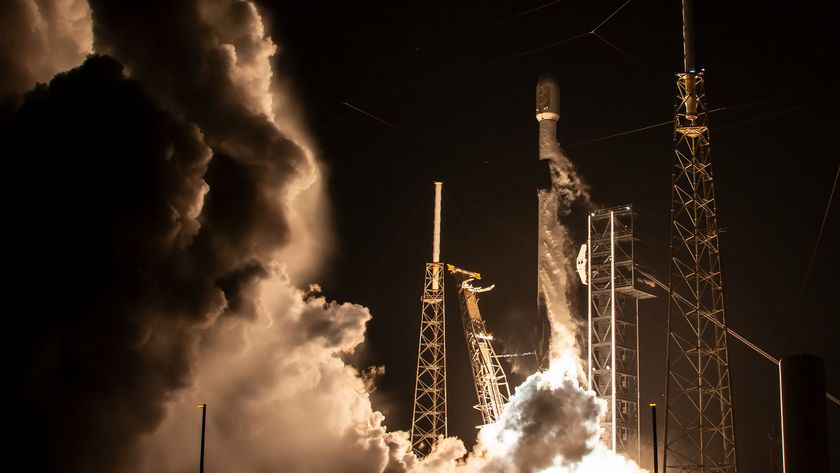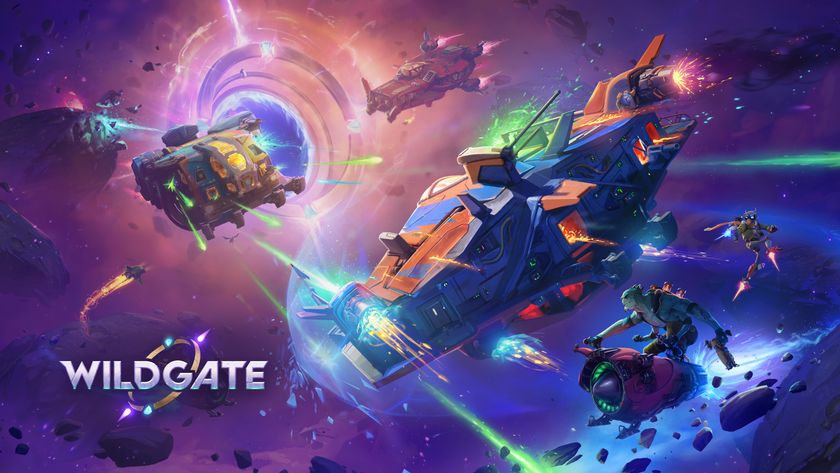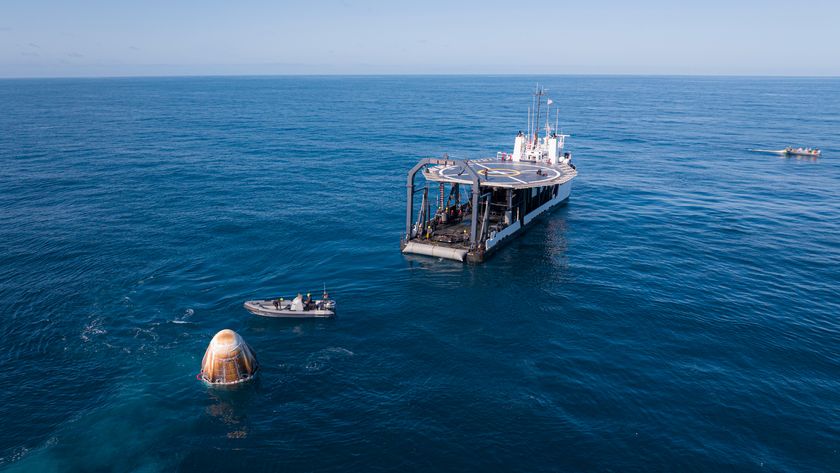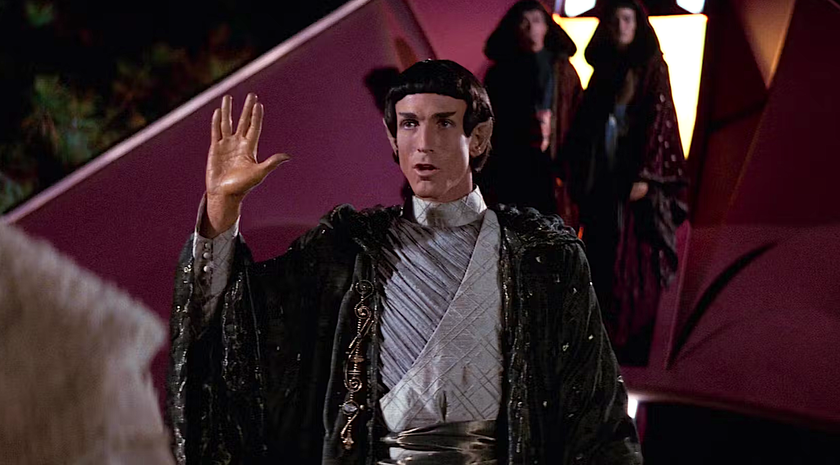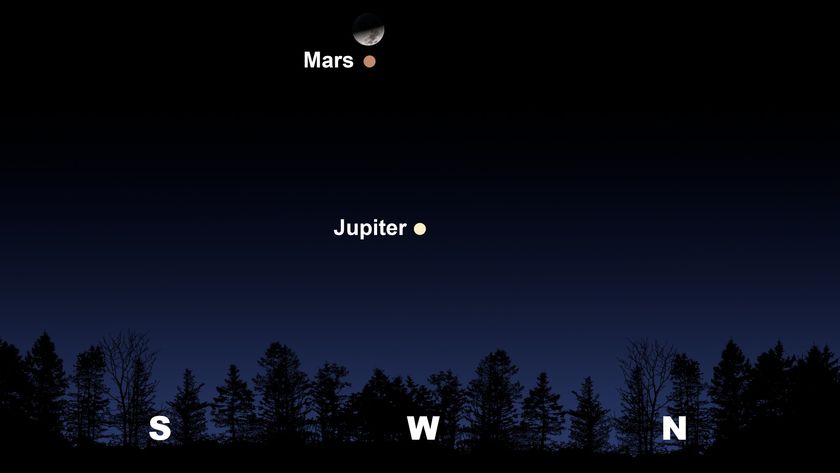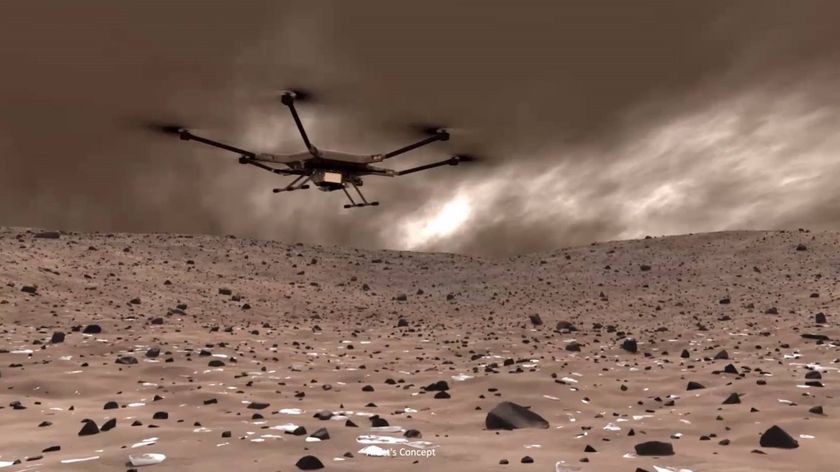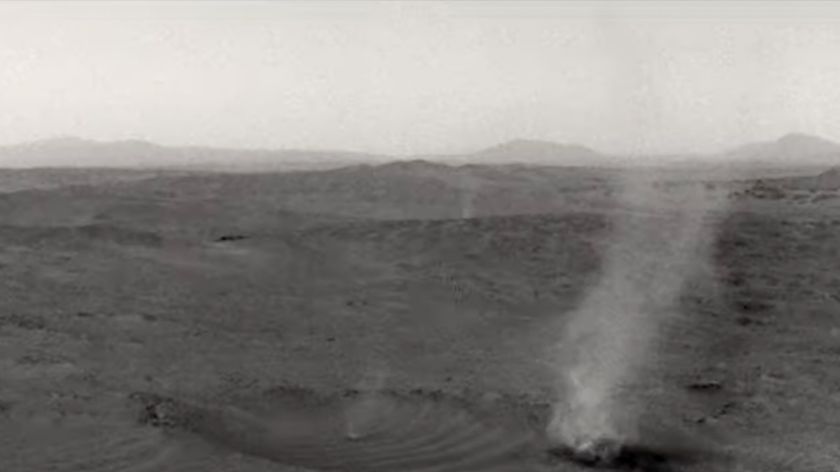Photographers capture the exact moment a gargantuan storm blasts out of the sun during a total solar eclipse
A stunning composite image of the sun during a recent 'hybrid eclipse' in Australia is further proof that solar activity is ramping up.
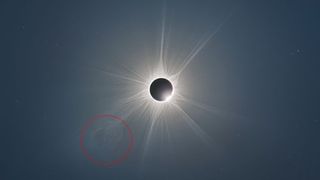
A group of astrophotographers captured a breathtaking image of the recent "hybrid solar eclipse," which was visible in the skies above Australia last month.
The image mainly shows off the ghostly filaments of the sun's corona, or outer atmosphere, but it also caught a faint glimpse of an eruption of magnetized plasma, known as a coronal mass ejection (CME), exploding away from the sun.
The rare eclipse, which occurred April 20, is known as a hybrid because it consisted of two separate eclipses occurring at the same time. These included a total solar eclipse — a fleeting yet complete occultation of the sun — and an annular solar eclipse: A longer yet incomplete eclipse where a halo of plasma remains visible around the moon. Although the eclipses occurred at the same time, most observers could only see one or the other depending on their location. The total solar eclipse was only visible to people who were perfectly positioned in line with the moon and the sun. Most people would have seen the annular eclipse instead. It was the first hybrid eclipse in more than a decade.
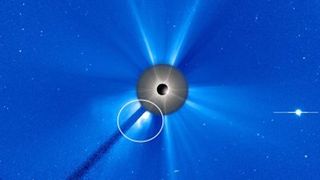
The new photo is a composite of hundreds of images captured by Czech astrophotographers Petr Horálek, Josef Kujal and Milan Hlaváč from their vantage point at Pebble Beach in New South Wales, according to Spaceweather.com. The combined image showed the peak of the total solar eclipse, known as totality, which lasted for around a minute and was the only time the sun's corona was fully visible. However, the detail captured in the new image is "much more than the human eye could see," Horálek told Spaceweather.com.
The astrophotographers were hoping to get a glimpse of the corona on the day, but they didn't expect to also see a CME erupting away from the sun. In the group's image, the CME is barely visible. But when it is overlaid on a coronagraph taken by NASA's Solar and Heliospheric Observatory at the same time, the stellar explosion becomes clear to see.
Related: Stunning solar eclipse caught by NASA in incredible closeup
Get the Space.com Newsletter
Breaking space news, the latest updates on rocket launches, skywatching events and more!
The sun's corona is particularly strong in the new image, which reflects an increase in solar activity as the sun approaches the peak of an 11-year cycle, known as the solar maximum, which is scheduled to arrive in the next few years. The unexpected CME is further evidence that the sun's activity is ramping up.
The image also shows the iconic "diamond ring" phenomenon, where the sun begins to move round from behind the moon as totality comes to an end.
The effects of the hybrid solar eclipse could also be seen from space. The same day, Japan's Hakuto-R lunar lander, which later crashed into the moon as it attempted to land on the lunar surface on Tuesday (April 25), snapped a stunning "Earthrise" image of our planet peeking out from behind the moon. In this shot, Australia is still covered by the moon's shadow and appears as a large, dark patch on the planet's surface.
In the past, solar eclipses have also provided opportunities for astrophotographers to capture once-in-a-lifetime shots, such as the award-winning "Golden Ring," which was taken by Chinese photographer Shuchang Dong during an eclipse above Tibet in 2020.
Join our Space Forums to keep talking space on the latest missions, night sky and more! And if you have a news tip, correction or comment, let us know at: community@space.com.

Harry is a U.K.-based staff writer at Live Science. He studied Marine Biology at the University of Exeter (Penryn campus) and after graduating started his own blog site "Marine Madness," which he continues to run with other ocean enthusiasts. He is also interested in evolution, climate change, robots, space exploration, environmental conservation and anything that's been fossilized. When not at work he can be found watching sci-fi films, playing old Pokemon games or running (probably slower than he'd like).



